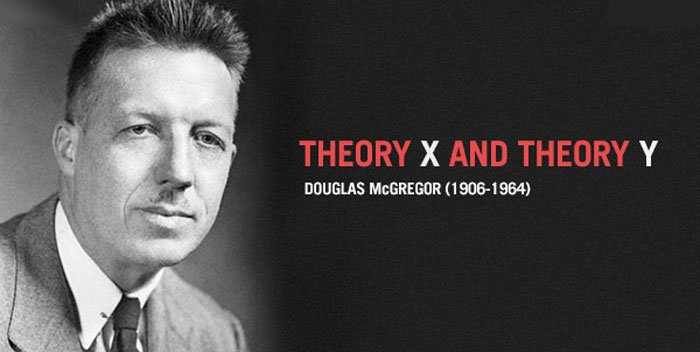Motivation theories – प्रेरणा सिद्धांत
सर्व पाठांशी संबंधीत व्हिडीओ लेक्चर्स पहाण्यासाठी इथे क्लिक करा
McGregor – Theory X & Y

McGregor’s Theory of Motivation, also known as Theory X and Theory Y, was proposed by Douglas McGregor in his book “The Human Side of Enterprise” published in 1960. McGregor developed two contrasting views of human motivation based on his observations of managerial behavior in organizations.
- Theory X: This theory assumes that employees are inherently lazy, dislike work, and will avoid it whenever possible. Managers who adhere to Theory X tend to use a more authoritarian and controlling management style. They believe that strict supervision, external rewards, and punishments are necessary to ensure employees’ compliance and productivity.
- Theory Y: In contrast, Theory Y assumes that employees are self-motivated, seek responsibility, and enjoy their work. Managers who follow Theory Y tend to adopt a more participative and empowering management style. They believe that employees are capable of self-direction and will work toward organizational goals if given the opportunity and the right work environment.
McGregor emphasized that an organization’s management philosophy and practices can influence employee motivation and behavior. Theory Y is generally considered a more positive and effective approach to motivating employees as it encourages employee empowerment, involvement, and trust in their capabilities.
Over time, various other motivational theories and models have been proposed, but McGregor’s Theory X and Theory Y remain significant in understanding different management approaches and their impact on employee motivation and performance.
McClelland’s theory
David McClelland’s Theory of Motivation, also known as the Three Needs Theory, was developed in the 1960s. McClelland proposed that individuals are motivated by three fundamental needs, which play a significant role in shaping their behavior and aspirations. The three needs are:
- Need for Achievement (nAch): People with a high need for achievement are driven by a desire to excel, accomplish challenging tasks, and set and attain personal goals. They seek opportunities to take on tasks with moderate difficulty and receive feedback on their performance.
- Need for Affiliation (nAff): Individuals with a high need for affiliation are motivated by the desire for social interaction, acceptance, and maintaining positive relationships with others. They seek opportunities for teamwork and collaboration.
- Need for Power (nPow): Those with a high need for power are motivated by the desire to influence, lead, and have control over others or situations. Their motivation comes from a sense of authority and the ability to make an impact.
McClelland believed that the prominence of these needs varies among individuals and can be influenced by their life experiences, culture, and upbringing. Organizations can effectively motivate their employees by understanding and aligning job characteristics and responsibilities with individuals’ dominant needs. For instance, those with a high need for achievement may thrive in roles that offer challenging projects and opportunities for recognition, while individuals with a high need for power may excel in leadership positions.
The Three Needs Theory has been widely studied and used in various organizational contexts to enhance employee motivation, job satisfaction, and performance.
![]()
